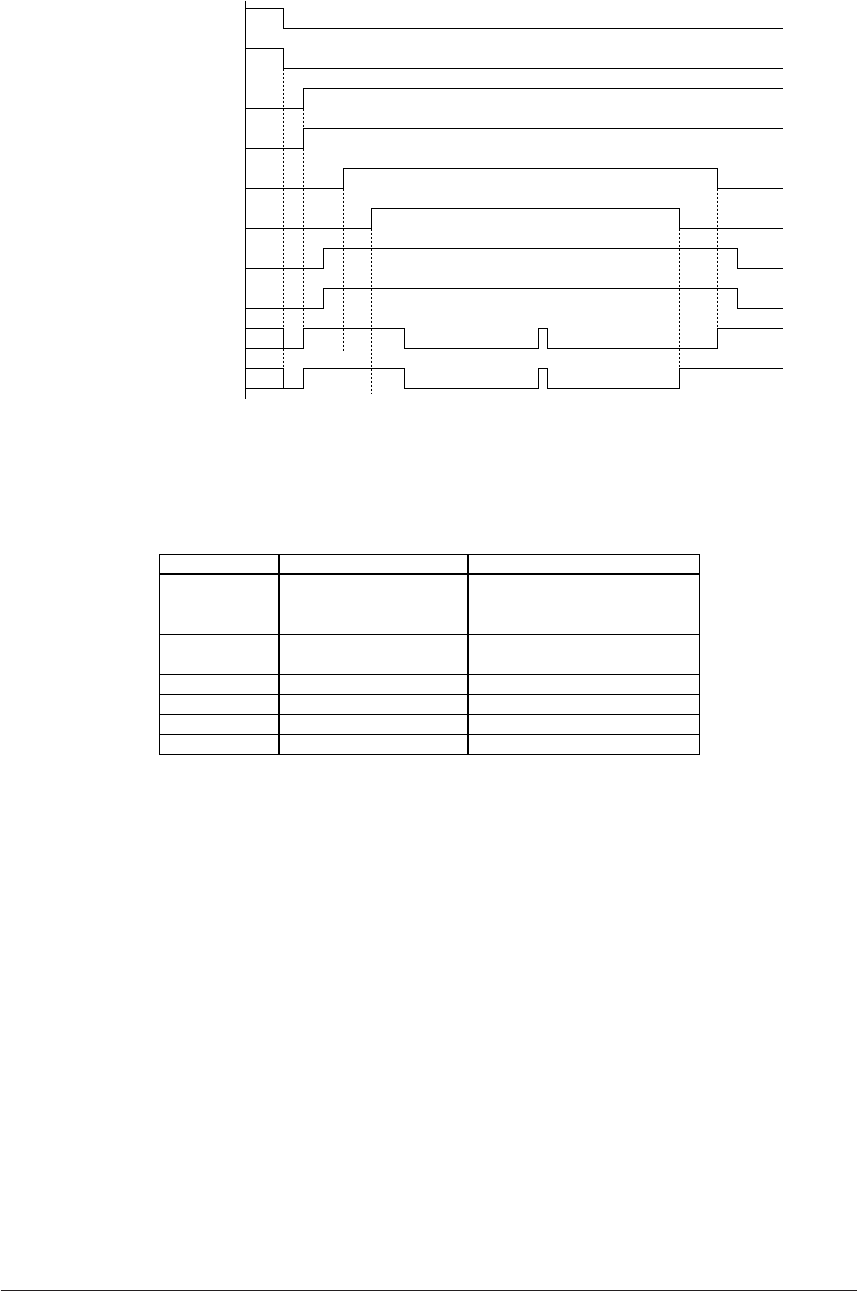
114 EPSON S1C63558 TECHNICAL MANUAL
CHAPTER 4: PERIPHERAL CIRCUITS AND OPERATION (Telephone Function)
R10HIZ
R11HIZ
R10 register
R11 register
CTMO(FF13H•D0)
CRMO(FF13H•D1)
CTMUT(FF18H•D0)
CRMUT(FF18H•D1)
R10(XTMUTE) output
R11(XRMUTE) output
Hi-z
Hi-z
"1"
"1"
"0"
"0"
"1"
"1"
"1"
"1"
"1"
"1"
"0"
"0"
"0"
"0"
"1"
"1"
Fig. 4.14.3.1 Output terminal setting procedure
(2) Executing
After setting, write the corresponding control register to start the execution.
Table 4.14.3.2 lists control registers for executing.
Table 4.14.3.2 Control registers and executing function
Functions
DTMF
DP
Pause
Flash
Hold-line
Handfree
Control registers
TCD3–TCD0 (FF17H)
CTO (FF16H•D3)
HSON (FF18H•D3)
TCD3–TCD0 (FF17H)
HSON (FF18H•D3)
PAUSE (FF14H•D1)
FLASH (FF14H•D0)
HOLD (FF14H•D2)
HF (FF14H•D3)
Executing function
Dialing tone
Continuous tone output ON/OFF
Hook switch ON/OFF
Dialing pulse
Hook switch ON/OFF
Pause
Flash
Hold-line
Handfree
See Section 4.14.10, "I/O memory of telephone function", for details of each control register.
The hook switch (HSON), continuous tone output (CTO), hold-line (HOLD) and handfree (HF)
functions and their timings are controlled by software. These functions do not generate interrupts.
The HSON that controls the hook switch must be turned ON (off-hook) before executing the tele-
phone function. Actual handset operations are not taken into the dialer. The HSON register allows on-
hook dialing. The hook switch should be connected to an input port (Kxx) and get the switch status
using an input interrupt.
By setting data for the dial number (1 digit) to the TCD register after setting HSON to off-hook, the
dialer output the dialing tone or dialing pulses according to the condition set in (1). When the output
is completed, an interrupt occurs. Use the interrupt for setting the next digit number.
The pause and flash functions are executed by writing "1" to the PAUSE and FLASH bits and will
generate an interrupt after the period of time set in (1) has passed. It is not necessary to turn the
function OFF.


















